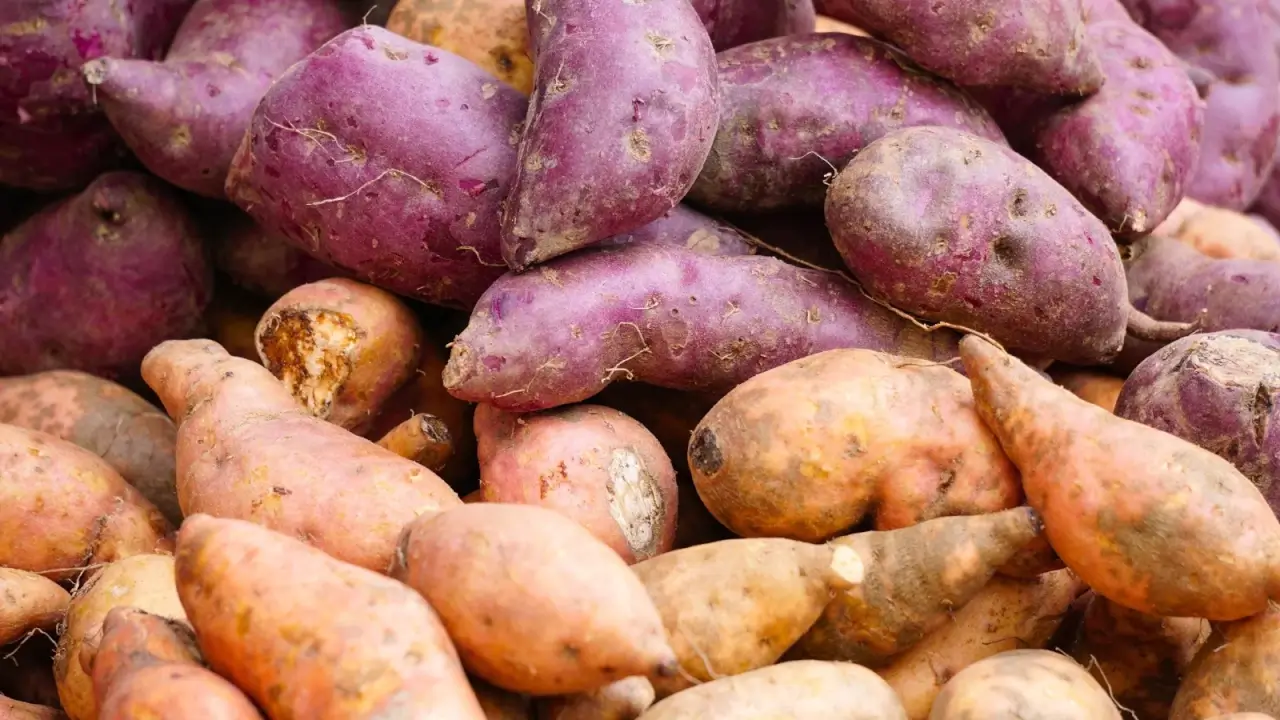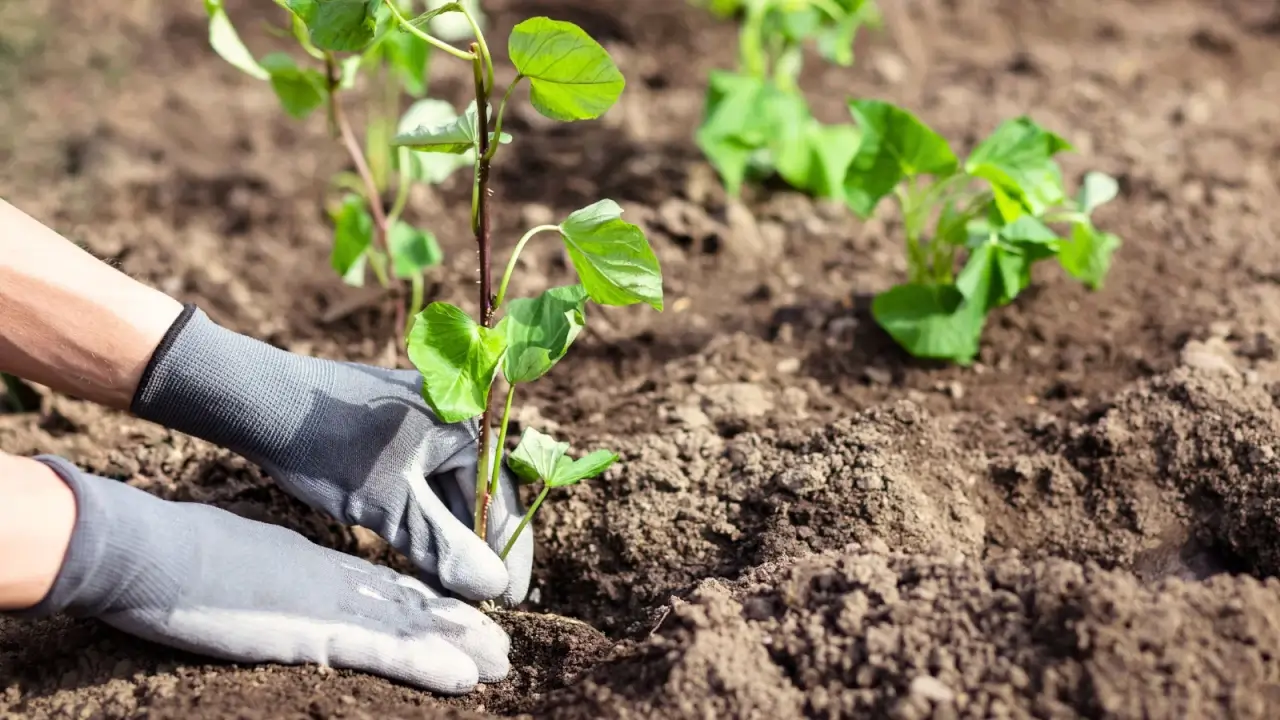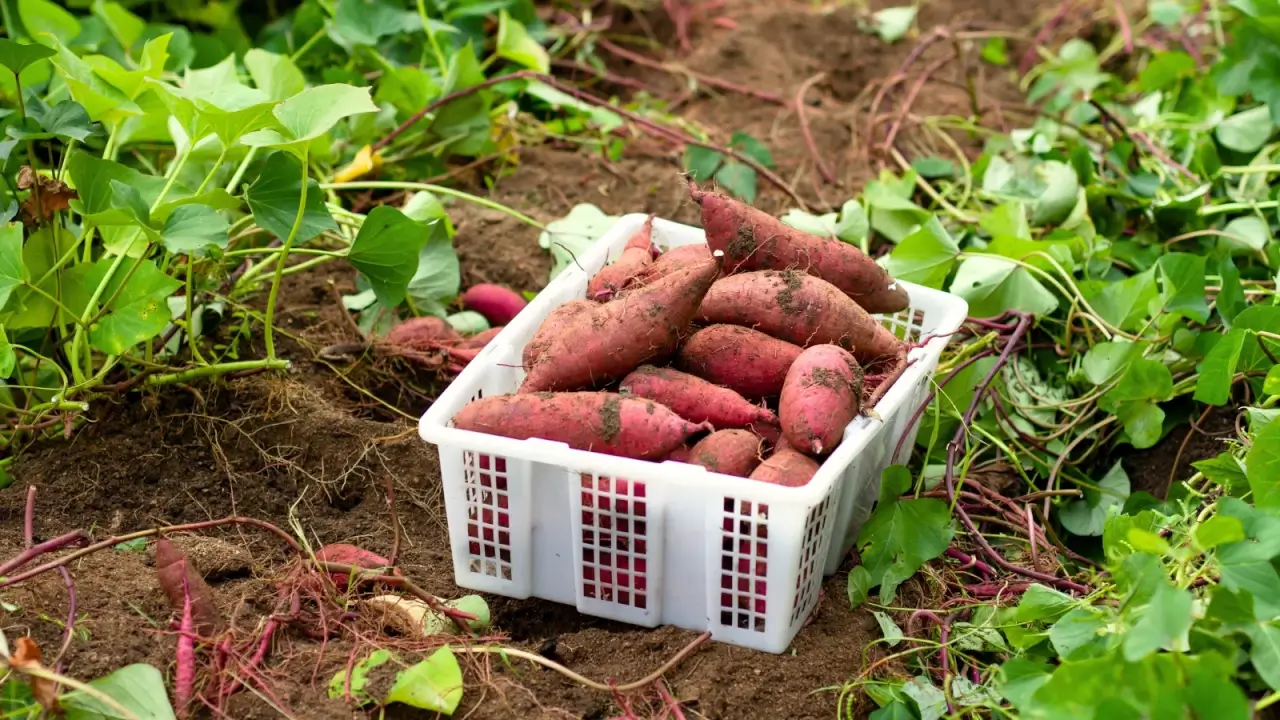Sweet potatoes are great. It doesn’t come down to much more than that. Classified botanically as Ipomoea batatas, this crop has a longstanding history among people of the Americas, and that is largely due to its reliability and adaptability to changing conditions. As the climate shifts, more and more farmers find this crop is worth growing.
Because this plant has been cultivated for thousands of years, there are numerous varieties with affinities for different regions. That means, as long as your warm season lasts at least three months, there’s a vine suited to your climate. Even if you don’t have a season long enough, with the right climate controls, greenhouse cultivation is possible.
Tracing the history of this beloved plant, it’s pretty easy to see why it has been in cultivation for so long. And learning its benefits to human health will come as no surprise. But that, too, is a worthy endeavor.
Sweet Potato History
The wild parentage of our contemporary sweet potato originated somewhere between the Yucatan and the Orinoco River in Venezuela. While accounts and genetic analysis show that colonization had much to do with its dispersal into Europe and the East Indies, they also indicate Mesoamericans managed to introduce the plant into Oceania naturally.
Through hybridization (of which kind is up for debate), wild plants slowly evolved to form multiple cultivated species, one being I. batatas. There are other Ipomoea species that purportedly emerged as a result of basic cultivation and hybridization. Today, both edible and ornamental varieties are grown all over the world, standing up to the tests of time and elements.
Health Benefits

Recently, people have turned to sweet potatoes as a potato replacement in their diet, due to its ability to provide fiber and starch without the same glycemic leap. These tubers also improve the absorption of certain fat-soluble vitamins and increase healthy liver functioning and iron uptake.
There’s an established history of using the vine’s leaves for medical reasons too, with cancer-fighting and anti-inflammatory properties identified in recent studies. Extracts of the whole plant are used to reduce the effects of diabetes, and have potential for antimicrobial effects as well. Overall, sweet potatoes offer a lot of health benefits in a dense calorie package. This makes them a good crop for survival gardens.
They’re also highly heat-tolerant, as they originate in tropical areas. In regions where summers extend year after year, sweet potatoes are a great crop. They’re also an excellent candidate in areas where groundwater is scarce, and can even be included in dry farming.
Varieties

In areas where the temperate to warm season is short, opt for a cultivar with a quick maturation period. If the mild season is about three months, it’s possible to grow a crop of Centennial, which has the typical orange flesh and skin of your standard type. Georgia Jet matures in the same timeframe, but has reddish or purple skin accompanying its orange interior.
Mid-range varieties, like Beauregard, with its purple skin and orangey flesh, are ready in around 110 days. Similarly, Sumor is an interesting one, with tan skin and light yellow interiors. Vardaman is a bush variety that doesn’t require a ton of space, and has the typical interior with golden skin.
For long seasons, Jewel is perfect, with a pretty standard look. This one takes up to 135 days to mature.
Growing Tips

As mentioned in the previous section, not all cultivars require a huge amount of space to grow a healthy crop. Some types are vining, and some are bush varieties that have limited growth in the season. For both varieties, prepare soil in a three to four foot area per plant.
Spacing
You can grow both types in containers, but use 20-gallon pots or larger, planting no more than four to five slips per 20-gallon container. Use a similar measurement in the ground. You can trellis vining types to ensure you have the room to cultivate a crop large enough for the market. You’ll get one to two pounds per slip, so calculate your planting based on this metric.
Plant out your slips when soil temperatures reach 70 to 80°F (21-27°C) and air temperatures are consistently above 50°F (10°C). Get them out as soon as these conditions arise if you have a short season, as these plants are sensitive to cool weather.
Soil
Soils should be amended with well-rotted compost, but the earth doesn’t have to be rich to produce a hefty crop. You need plenty of good drainage and ample water when the slips are establishing. After that, they can handle some dryness, but regular, consistent watering keeps your crop uniform and prevents cracking. Auto drip irrigation with a rain sensor is a great option.
Harvest
When they’re ready to remove, gently dig them from the ground, using a shovel to pierce the ground around the bed perimeter. This keeps them safe from damage. You need a spot to cure them before they head to market. Give them a one to two week cure in an area at 80°F (27°C) with good air circulation. Then transfer to a root cellar or spot that’s around 50°F (10°C) for long-term storage.
Protect your crop from pests like flea beetles, cutworms, scurf, and black rot. The first of these is staved off by a good row cover. The other two are best prevented by properly culturing your crop. Be ready to harvest some huge tubers, along with standard sized ones when harvest season comes.
Meet the Arkansas Farmers Turning Sweet Potatoes into Spirits
The Williams family has maintained its Black-owned farming operation for four generations, thanks to a penchant for diversification.
The post The Sweet Superfood You Should Be Growing appeared first on Modern Farmer.



